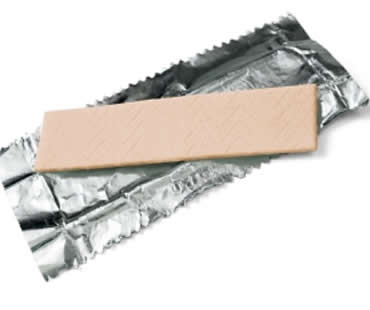
Oct 28, 2022 | General Dentistry, Blog, Dental Topics 1
As we age, our teeth and gums change. Proper care of your teeth as well as eating a good diet can keep your smile beautiful and strong. Certain vitamins and minerals also help promote optimal oral health.
As we age, our teeth and gums change. Proper care of your teeth as well as eating a good diet can keep your smile beautiful and strong. Certain vitamins and minerals also help promote optimal oral health.
Vitamin A
Besides aiding with vision, Vitamin A also helps with the development of healthy teeth and gums. As well, Vitamin A contains beta-carotene, which has antioxidant properties. These antioxidants assist in getting rid of free radicals, chemicals that speed up decay in the body.
Vitamin C
Also called ascorbic acid, Vitamin C assists with the absorption of iron, maintains healthy connective tissues, and promotes strong teeth and gum tissue. Because Vitamin C is water-soluble, it is washed out of the body once it has what it needs, people should take in Vitamin C every day.
Vitamin D
Created after exposure to sunlight, Vitamin D encourages calcium absorption as well as helping keep the right levels of calcium and phosphorous in the blood stream. Children need to get enough Vitamin D so that they will develop healthy teeth and bones, so it is often added to milk.
Calcium
No matter your age, every person needs to take in enough calcium because this mineral is crucial in the development and maintenance of teeth and bones. In fact, your jaw bone forms the foundation that houses your teeth.
Getting What You Need
Eating a balanced diet will ensure that your body has the vitamins and minerals needed to keep your smile vibrant for a lifetime. Dairy products like yogurt and cheese as well as vegetables such as broccoli and peas are high in calcium. Have lots of egg yolks, fatty fish, and fortified dairy products when you need Vitamin D. Citrus fruits, melons, berries, and tomatoes offer plenty of Vitamin C, and you can find Vitamin A in dark green or yellow fruits and vegetables, eggs, or low-fat dairy products.

Apr 29, 2022 | General Dentistry, Blog, Dental Topics 1
How much do you really know about your mouth? Most people understand basic brushing and flossing, but they may not realize the myriad of factors that influence dental health. Knowing how your lifestyle impacts your teeth and gums can help you make the best choices to protect your smile.
True or False: You don’t need to floss every day.
Answer: False. Brushing alone won’t protect your mouth from decay or gum disease. Floss gets hard-to-reach areas, cleaning out the plaque and bacteria that wreak havoc on your oral health.
True or False: Taking care of your tongue is important, so you should brush it regularly.
Answer: True. The tiny bumps on your tongue called papillae trap food and bacteria, which can cause bad breath. Brushing twice a day will keep your breath smelling great.
True or False: Soft drinks and sports drinks don’t damage teeth.
Answer: False. These beverages, as well as red wine and fruit juices, can lead to enamel erosion. It’s best to stick with water, but if you consume these drinks, rinse your mouth when you finish.
True or False: It’s okay to put your baby to bed with a bottle of juice or milk.
Answer: False. When you let your baby or toddler fall asleep with anything but water, you increase the risk of baby bottle tooth decay. This condition occurs because of prolonged bottle feeding, usually during sleep. Young children don’t have good plaque removal, so these beverages provide a breeding ground for bacteria.
True or False: Fluoride reduces decay 20 to 40 percent.
Answer: True. Drinking water with fluoride strengthens tooth enamel and also reduces the amount of acid that the bacteria in your mouth produce. Since fluoride was added to the drinking water supplies across the country, childhood cavity rates have dramatically dropped.
Schedule a dental cleaning appointment today at our Conyers dentists office.

Feb 18, 2022 | General Dentistry, Blog, Dental Topics 1
Fun in the summer sun can cause unpleasant side effects such as cold sores and fever blisters. Brought on by herpes simplex virus type 1 (HSV-1), cold sores and fever blisters are transmitted from person to person by saliva or by skin contact. With cold sores, you generally develop clusters of tiny blisters on the lip. Most people are exposed to HSV-1 before age 10. After the first infection, the virus remains inactive until stress, illness, or sun exposure causes a new outbreak.
During the first exposure, you may have headache, nausea, fever, and/or vomiting. Patients may also have painful swelling and open mouth sores. Most of the time, cold sores or fever blisters appear on the edges of your lips. Usually, these outbreaks start with tingling or burning followed by swelling or redness. One or more blisters will typically appear within 24 to 48 hours.
Initial symptoms can last for 7 to 14 days. When the cold sores or blisters reappear, they generally crust over in about four days and then heal within 10 days. You may want to visit your doctor or dentist the first time you develop cold sores or fever blisters, but after that, you shouldn’t need medical attention. Keep the area clean and apply topical medication to lessen symptoms as well as promote healing.
Preventing a first infection for loved ones involves making sure that no one with an active fever blister kisses your kids or other family members. Sunscreen can help protect your lips from cold sores brought on by too much time in the sun.
Dentist in Conyers

Jan 13, 2023 | General Dentistry, Blog, Dental Topics 1
Gone are the days when chewing gum is considered poor etiquette. In today’s society, you can find people chewing gum in business meetings, church, and just about every other situation. With gum chewing so prevalent, you may have wondered what it’s doing to people’s teeth. You may be surprised to learn that research shows that chewing sugarless gum has a number of dental benefits. Let’s see how it can actually be a helpful addition to your oral care routine.
Saliva flow
Chewing sugarless gum increases the flow of saliva in your mouth, which rinses away food particles. Saliva also neutralizes acids that result from bacteria in your mouth that can lead to tooth decay. Known to carry with it calcium and phosphate, increased saliva flow also helps strengthen your tooth enamel.
ADA acceptance
Choose gum with the American Dental Association (ADA) Seal, indicating it as met the required safety and effectiveness criteria. This approval means that you can trust the gum’s packaging and labeling to be true.
Sugarless
The only gums carrying the ADA Seal are sugarless. They contain sweeteners that don’t cause cavities, like aspartame, mannitol, sorbitol, or xylitol. Chewing gum with xylitol is especially recommended, because it has been shown to combat tooth decay and cavities.
Dental hygiene
Even though chewing gum can be beneficial, remember that brushing and flossing are still the best ways to care for your teeth. Brush twice a day with fluoride toothpaste, and floss every day to remove plaque and debris between your teeth. Between these dental hygiene tasks, however, it is acceptable to chew sugarless gum to continue caring for your mouth during the day.
If you need a dentist in Conyers contact us today

Mar 3, 2023 | General Dentistry, Blog, Dental Topics 1
You’re sitting in your dentist’s chair for your checkup, and you hear the dreaded words that you have a cavity. Is it really a cause for panic? Modern advances in equipment and methods may surprise you about what really happens when you get a filling. Let’s learn what to expect if you need this procedure.
The first thing you and your dentist will discuss is the type of filling that is best for you. One choice is an amalgam filling. It is known for its durability, but contains a small amount of mercury which raises concerns among some patients. Another option is a resin composite filling, which is a newer material that contains more plastics. Many patients like this option because its white color is less noticeable in your mouth, but it lasts only about half as long as an amalgam filling.
The first step of the process is numbing the area, unless the cavity is very small and it’s unnecessary. First, the dentist will rub a topical numbing agent on the area, and will give you an injection after it takes effect. Many patients don’t even feel the injection after the topical numbing.
Next, the dentist will separate the area being worked on from the rest of your mouth using a rubber dam or a bite block. Once your mouth is ready, your tooth will be drilled and the decay will be removed.
The actual filling will be placed after the decay is gone. If you are receiving an amalgam filling, the hole will be filled with the metals. It will be pushed down to ensure all of the space is full, and then any overflow will be removed to make the tooth smooth. If you are getting a composite filling instead, the dentist will put some blue acid in the hole to create small holes for bonding the material. The acid is then rinsed, and a bonding agent is applied. Then the composite material will be added. A blue light will be used to harden and strengthen the material. Finally, the filling will be filed to make it smooth.
Dental fillings dentist in Conyers

May 29, 2020 | General Dentistry, Blog, Dental Topics 1
A number of serious health problems like cancer are linked to smoking, but your oral health is also at risk from using tobacco. Your teeth can be severely stained, turning them yellow or brown, and your lips can become darker too. Smokers have a higher risk of tooth decay, and bad breath is nearly inevitable. The negative outcomes of smoking continue to worsen the longer you keep doing it, so it’s highly advisable to kick the habit. However, as most smokers can attest, giving it up is not easy. Here are some tips that may help you quit smoking.
Make a list
Create a list of the reasons you’d like to quit smoking, and look at it often to remind you of your goals and the benefits you’ll achieve. These may include things like improving your overall health, restoring your smile, making loved ones proud of you, and even saving money.
Choose a date
Select a date on the calendar to stop, and stick to it. Having a concrete target can help you focus on the challenge ahead.
Ask for help
The support and encouragement from others can be a huge part of quitting smoking. Tell your family and friends about your goal, and allow them to play a part in accomplishing it.
Occupy your mouth
Sucking on sugarless candy or mints can keep your mouth busy, so you’ll be less inclined to put a cigarette in it. Chewing sugar-free gum is another great remedy for the urge to light up.
Keep busy
Try to find things to occupy your time and mind so that you aren’t constantly thinking about smoking. Take up a new hobby that involves both your mind and your hands so that you are busy with other, more beneficial, activities than puffing on a cigarette.
If you need a dentist in Conyers contact us today








